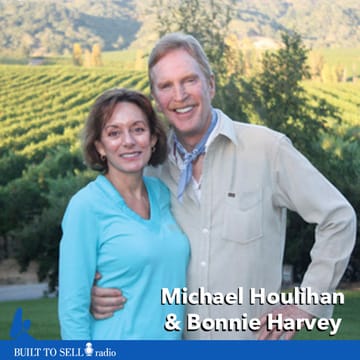About this episode
Michael Houlihan and Bonnie Harvey built Barefoot Cellars to sales of more than 600,000 cases of wine per year when they got the attention of E&J Gallo, America’s largest winemaker.
To read a transcript of this episode, click here.
Gallo was impressed with how quickly a $7 bottle of Barefoot moved off retailers’ shelves and were intrigued by Barefoot’s use of grassroots sponsorships to grow a national brand. Rather than compete with Barefoot, Gallo decided to buy the business. In this episode, you’ll learn:
- Why the best goals are often set for you
- How to use distributors to win the attention of an acquirer
- The difference between a vanity and a strategic buyer
- The single most important thing you need to do before you put your business up for sale
- How to create a silent auction for your company
Barefoot’s secret marketing sauce was to partner with grassroots community organizations using free wine as a currency to get sponsorship deals for pennies on the dollar. You’ll discover how to create your durable marketing platform in Module 6 of The Value Builder System. Get started free by getting your Value Builder Score.
Click here to download Chapter 1 sample from M&B business audio theatre audiobook, The Barefoot Spirit, and learn more about Michael & Bonnie’s success story.
Check out our article on 5 Secrets To Attracting Strategic Acquirers In Today’s Market.

About Our Guest
Bonnie Harvey and Michael Houlihan help Startup, Build up, and Build out Companies monetize their Brand Equity.
They are the founders of the world’s largest wine brand, international Keynote Speakers, and New York Times Bestselling authors of The Barefoot Spirit, How Hardship, Hustle, and Heart Built America’s #1 Wine Brand and The Entrepreneurial Culture, 23 Ways to Engage and Empower Your People.


